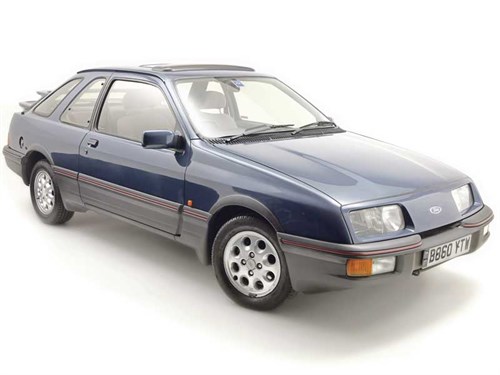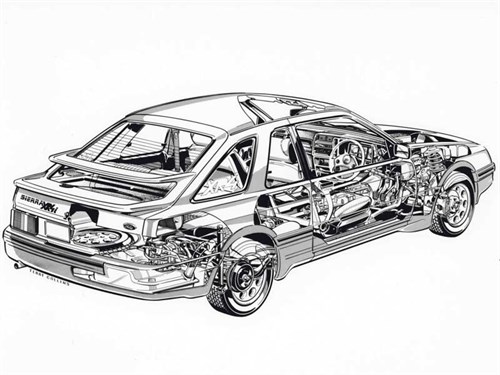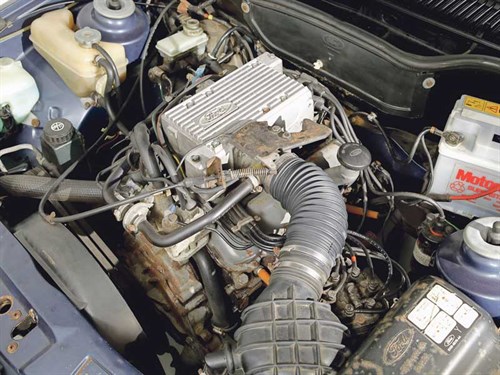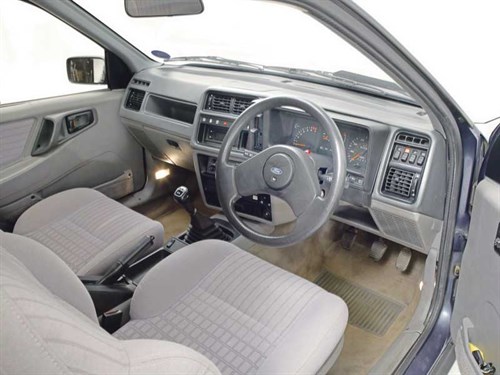Once they were everywhere, but now Ford’s groundbreaking Sierra is an increasingly rare sight. We show you how to buy a good example of this extremely underrated classic...

Time hasn’t been kind to the Sierra. At its 1982 launch, loyal Ford buyers were put off its radical aerodynamic styling, even though its proven mechanicals were largely taken from the much-loved Cortina. After fighting the good sales fight against the Cavalier in a bid to become a familiar part of UK street furniture, the Sierra slipped into banger territory, and has struggled to pull itself out ever since.
Today, Ford’s spacious hatchback is something of a classic bargain. Prices are still rock-bottom for all but the sporty XR4i, and swivel-eyed Sierra Cosworth. Yet all models offer commendable drivability and are incredibly easy to live with.
Buy one now, before they all disappear.
VITAL STATISTICS
1983 FORD SIERRA 2.0
Engine 1993cc/4-cyl/OHC
Power (bhp@rpm) 103bhp@5200rpm
Torque (lb ft@rpm) 116lb ft@4000rpm
Top speed 115mph
0-60mph 10.4sec
Consumption 35.8mpg
Gearbox 5-speed manual.
WHAT TO LOOK FOR
BODYWORK & CHASSIS
Although less rot-prone than many classics, even the youngest of the first-generation Sierras is a quarter of a century old, so rust has had plenty of time to take hold. Inspect the sill structures closely; watch out for hurried MoT-pass repairs. Take a look at the condition of the footwells. A leaking sunroof will result in damp carpets, which will in turn lead to rot eating away at the floor-pans. Watch for rusty boot floors and lower rear wings.
With the bonnet open, check the inner wings, slam panel and front cross-member for corrosion or signs of accident damage. The sporty XR4i is all the more likely to have been crashed; rippling panels are the biggest clue to poorly-repaired accident damage.
The condition of the suspension turrets, front and rear, is crucial; watch out for clumsy patches welded over rot. Grit and road spray give the inner wheel-arches a good pounding, while a rotten battery tray is tricky to put right.
Any bubbling beneath window rubbers will only get worse over time; this is a glass-out job to rectify. Take a good look at the sunroof aperture; blocked drainage holes will lead to rust.
Doors rot around the windows, as well as their lower edges; the plastic trim of the XR4i hides the latter. Secondhand panels do occasionally turn up at breakers’ yards, although doors for the rare three-door models will take some finding.

ENGINE
The sprawling Sierra range used a number of different engines. The hardy Pinto was used in 1.3, 1.6, 1.8 and 2.0-litre guises, along with a Peugeot-sourced 2.3-litre diesel engine. All are tough, and the Pinto can cover over 150,000 miles with regular oil changes, although if this hasn’t happened, oil blockage problems can destroy camshafts and followers. Look out for oil smoke under acceleration, as well as lubricant leaks.
Higher-spec models used the Cologne V6 in 2.3 or 2.8-litre sizes. These unstressed units can cover over 200,000 miles with care, although top-end valve gear chatter is a result of a lack of oil changes and/or poor quality oil. Ask how regularly the car has been serviced; low values mean that maintenance is neglected on many Sierras.

RUNNING GEAR
As hard-wearing as the engines, the transmissions used on the Sierra aren’t especially troublesome. Manual versions had either four or five gears (depending upon engine size and age), while automatics always had three ratios. All are tough, and should change smoothly, with the five-speed Type 9 still a popular modification for other classics.
Oil level needs to have been maintained to avoid premature wear. However, if you’re test driving a XR4x4, beware of nasty noises while on the move; it could signify transfer box damage.
If the rubber suspension bushes have deteriorated, the car will feel a lot less sharp to drive than it should; inspect the bushes for the front lower arms and rear trailing arms in particular. Ineffective braking could be down to seized rear wheel cylinders, or excessively worn or warped front discs. Beware of XR4is that have lost their heavier-duty suspension dampers; have corners been cut in other areas of maintenance?
INTERIOR
Regardless of whether cloth or velour is fitted, the Sierra’s trim is quite hard wearing. This is just as well, as tracking down replacement trim will be a nightmare. High-mileage cars are more likely to be suffering from tears, stains and sagging bolsters on the driver’s seat, while carpets can go mouldy, if water is leaking into the cabin.
Check that all of the electrical functions – and there are many on the range-topping Ghia – still work. Plastics can fade and crack in the sun, and parcel shelves and door trims are often butchered to fit aftermarket speakers.

OUR VERDICT
Competent, comfortable and easy to live with, the Sierra is still a smart motoring choice today. That explains why many survivors are still treated as everyday cars. Those fuel-saving aerodynamics, coupled with motorway-friendly gearing and thrifty engines ensure that almost all derivatives are still affordable to run. Sadly, most people have yet to cotton on to what outstanding value the Sierra offers. Grab one now, before they all disappear.